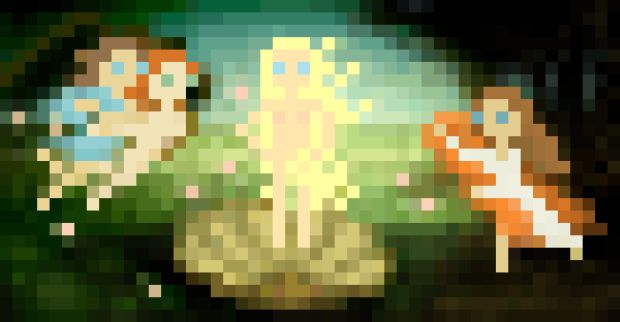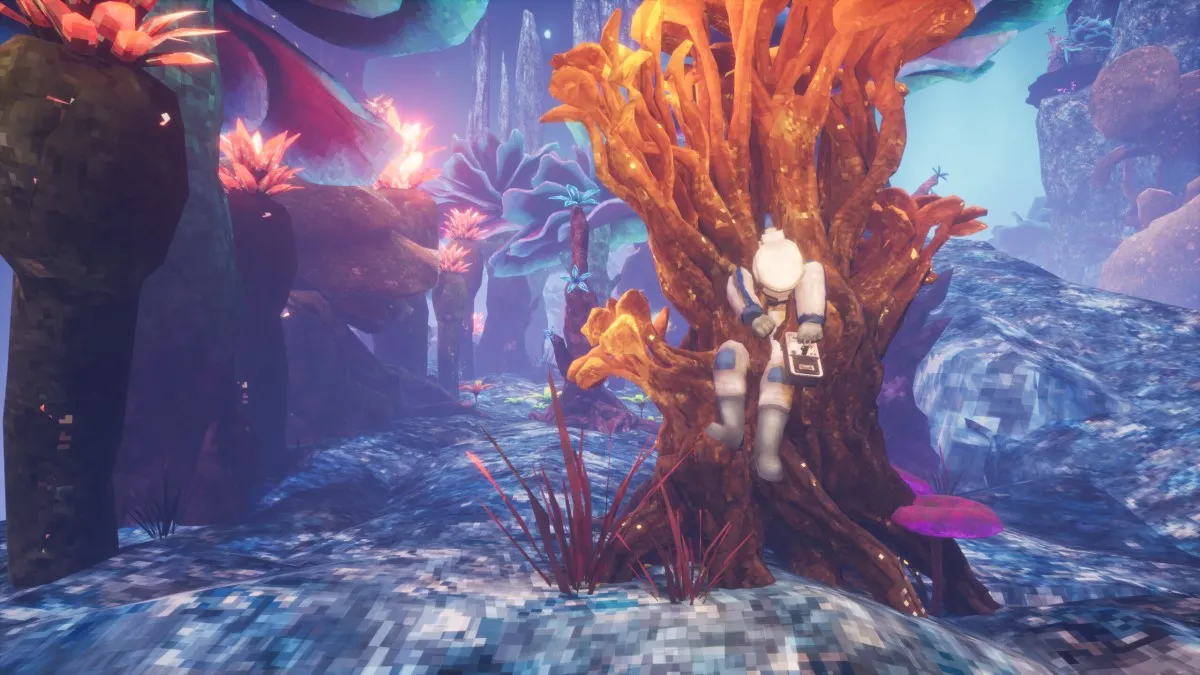If you haven’t played Gamma Bros, congratulations: you’ve missed out on possibly the single best flash game on the Internet. You also probably have no idea who Miles Tilmann and Rich Grilloti are.
Those of you who do not suck may recognize those two names as respectively belonging to the programmer and artist that make up Pixeljam games, responsible for the aforementioned Gamma Bros as well as Dino Run and Ratmaze.
Where most of the Independent Games Summit’s lectures revolved around making downloadable titles, Tilmann and Grilloti discussed the merits and difficulties of creating revenue through flash games in their session, “Making Web Games: The Indie Experience.”
Hit the jump for a summary of the talk. After you’ve played Gamma Bros again.
The session started with a simple introduction to flash games as a whole: approximately 500 billion are playable right now, most are created by amateurs, they’re designed to be seen by millions of people, they have no standards for quality, and no rules or limits for monetization. The final item on the list summarized the others: “total chaos.”
Grilloti and Tilmann make their living purely on making these sort of flash games, so how did they do it? Grilloti started off doing abstract pixel art before moving into character design, while Tilmann was growing in programming talent until it seemed like he could make a game. Both wanted to make games from very early on and were friends from college, so the decision to make games was initially a no-brainer.
Except for the fact that Tilmann had almost no programming experience.
The team started very small, making a one-room Adventure clone that took a few weeks to develop. Eventually they moved into f a goal-free adventure thing which gave Grilloti the opportunity to experiment with hundreds of pixel character designs. “It’s amazing what you can do with pixels,” Grilloti simply declared to knowing (if quiet) laughter.
Amateur Move #1, according to a slide, was getting too ambitious with the adventure game when they actually knew nothing. That said, though, the characters that were created for the adventure game turned into protagonists for later games. A collection of pixel characters flashed across the screen, including what would eventually become the protagonists of Ratmaze and Gamma Bros. They found these characters so emotive in a somewhat inexplicable way that you immediately knew their history and gameplay ideas just came out of that.
Pixeljam spent the next seven months working on Gamma Bros, turning characters that were initially antagonists in the adventure gameinto the protagonists for this newer (and really good) game.
They assumed that Gamma Bros would be looked at as a brand new and awesome neo-retro experience, which led to a slide explaining Amateur Move #2: blindly throwing a new game into cyberspace with a very naïve plan. There was no functional revenue stream for the site outside of donations, but they at least made it into IGF, got actual programming experience, and began to build a Pixeljam audience.
This was followed by a year of prototyping, leading to a lot of abandoned half-idea games like Bee Game or Moon Game, most of which were halted by time, expertise, or budget constraints. This led to Pro Move #1: knowing when to quit. Had they forced themselves to finish these games, they would have had to “cut too many corners.” Grilloti assured the audience that they’re ready to revisit those games when the time is right.
Ratmaze 2 was fun and easy game created for money and sponsorship deals, but it taught them a lot about exclusivity issues. An alarming-looking slide warns indie devs to be careful of exclusivity deals.
Dino Run‘s initial prototype was too hard and bland, so they spent six months mining those nuggets of awesomeness and turning it into the experience that is now available. To market the game, Pixeljam now had a more defined plan: create MySpace accounts for the game characters and get fans to follow their favorites.

After that, they attracted the attention of companies like Comedy Central who wanted Grilloti and Tilmann to make games for them. This, however, resulted in an issue of practicality versus idealism – a conflict that had not previously existed when Pixeljam was just making games for itself. “Even if we thought we had more than enough time to do a game, we’d fill that time completely,” Grillotti added, verbalizing what a slide referred to as “the goldfish effect.”
This led to another pro move, however: using work for hire as a means for aquiring new skills and tools.
How do most free games make money? Traditionally, by ads, sponsorships, revenue share, and licenses. For Dino Run, 55% of the cash came from licenses, 20% from ads, revenue share was 15%, and donations made up 10%. Pixeljam provided an incentive for donating this time around in the form of unlockable hats, which helped players feel emotionally connected to their personal dinos even though many who donated would pass on their donation keys to others for free, leading to the comparatively low donation revenue.
When it comes down to it, the majority of the cash comes from ads. Making games became a really confusing muddle of questions: where they making games for ads, or were their games ads? The Sarah Silverman Program is free to watch but you have to watch ads, and their game worked the same way – what did that mean for their work?
Some games aren’t diminished by ads, as a slide showing Kitten Cannon illustrated, but some games – a slide shows the original Zelda surrounded by popups – might not. Tilmann topped short of making outright statements about the morality of this artistic dilemma, but he and Grilloti both agreed that their main goal was in providing the best player experience.
Be aware of your intention, a slide warns: “if your intention is clear, bad decisions will probably still lead you to your goal.” “If your intention is just to make games…that are disposable…that’s great and you should do that…but if your intention is to kind of make games that don’t really fit into that mold, there are a lot of things to consider,” Tilmann said.
Don’t try to make a triple-A title, for instance. You can’t recreate that sort of experience within a flash format, typically. Tilmann likened it to going on YouTube and trying to watch people (poorly) emulate the style and impressiveness of The Matrix who are completely oblivious to their own overreaching ambition.
Work with your complement. “Even if,” Tilmann says, “you have a split personality and you’re talking to yourself.” He and Grilloti get along well because they complement each other as designers, and that relationship only ran into problems once they started doing work for hire which “magnified these minor tensions.”
Communicate everything even if it hurts.
Give the player a reason to care. This was Tilmann’s biggest point – “If I go online and play flash games I can understand why there’s such a stigma to them…you really don’t care what’s going on, it’s almost like doing drugs or something. You do it for five minutes and then forget it.”
How do web games make money without ads? Just do all the above – make players care about the game, the characters, and your company.
“If people are going to pay for your flash game,” the next slide reads, “it’s going to have to be awesome.” Flash games allow millions of people to see your game, which you can provide online as a free web demo for a longer downloadable title, can lead to people sending you donations where they define, for you, how much your game is worth. “There’s no set of rules that you have to play by,” Tilmann stated with something close to enthusiasm.





Published: Mar 24, 2009 10:00 pm